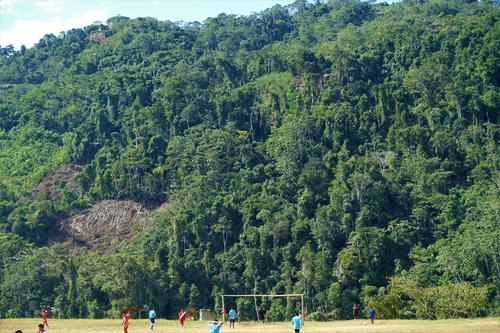Central Rainforest
The variety of music and dance genres unique to Asháninka and Nomatsiguenga societies and cultures is an integral part of social, cultural, and political life of any comunidad nativa. For example, these indigenous peoples distinguish between the matikantsi sung by men while beating drums, the maninkerentsi intoned by women while they dance in a row, Sonkatantsi, instrumental pieces played with Amazonian flutes, and chants dedicated to ayahuasca or kamarampi (a vine used for curing by the sheripiari, shamans). In addition, the communities of the río Ene basin have adopted the marching band, an ensemble which has become a basic element of community festivities commemorating land title grants, the creation of comunidades nativas, and their schools. Hymns and instrumental pieces are played at the Asháninka and Nomatsiguenga evangelical churches. These cultural expressions may be carried out for different purposes in diverse settings and according to varying moods: When socializing and drinking masato (a manioc beverage), when healing, when practicing one’s religion, when establishing alliances with other comunidades nativas, or when staging performances at meetings organized by the political federations of the Nomatsiguenga and Asháninka.
Nevertheless, to date little is known about the history of Asháninka and Nomatsiguenga music and dance, its current uses, the way it is performed and transmitted. How did music and dance evolve in the face of deep changes in the course of diverse extractivist booms, including the current exploitation of timber? Technological changes, like the recent appropriation of MP3 files played on cell phones and sound systems as well as the wider dissemination of the popular tunes of huaynos, chicha, and tecnocumbia have revolutionized the soundscapes of everyday life, work, and festivities. The collaborative project Shared Soundscapes is dedicated to generating more knowledge on Asháninka and Nomatsiguenga music and dance from the community itself. It promotes community members documenting them in the present and archiving their manifestations. A diverse group of people intervene in these soundscapes: women and men; boys and girls; people of different professions, including those who cultivate their plots, hunt, and fish; musicians and dancers, both experts and trainees; as well as cultural promotors, teachers, and political appointees who encourage Nomatsiguenga and Asháninka music and dance repertoires.

